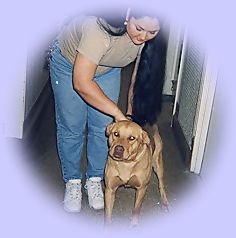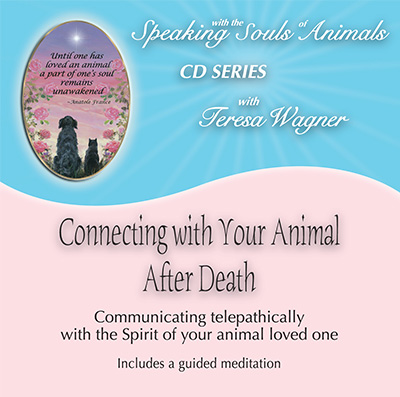Compassion Fatigue of Animal Care Work
What is Compassion Fatigue?
How is it different from everyday stress and how do I know if I have it?
There are many terms to describe the pressures we feel from life in general and from our work. Ultimately, words and labels don't matter. In themselves they certainly don't fix anything. However, sometimes the use of language to describe the specificity of what we feel and experience can help us understand and even uncover what we're going through much more clearly. This clarity, in turn, can help us take the most appropriate action to heal.
In that light, here are some terms which may help you discriminate your experiences in animal care:
STRESS is when we're feeling the tension of the everyday pressures of the job and life, but we're handling it. Selye showed us that we can experience virtually any physical symptom in response to stress."Stress is the non-specific response of the body to any demand placed upon it." (Selye)
BURNOUT is when we doubt our ability to keep coping constructively with the pressures. It is more intense and debilitating than stress."Burnout is the development of a negative self-concept and negative attitude towards work, people involved in the work, life itself, and a severely hampered ability to cope with the work environment." (Pines and Aronson 1988)
PTSD (post traumatic stress disorder) differs from stress and burnout in its cause— it's in response to trauma, not everyday situations."Post traumatic stress is a normal reaction to abnormal events, a reaction to experiencing an event outside the range of usual experience that would be markedly distressing to almost anyone.: (APA Diagnostic and Statistical Manual IV 1994)
STSD (secondary traumatic stress disorder) The stress resulting from working with trauma victims
COMPASSION FATIGUE is an accepted alternative term for secondary traumatic stress disorder."Compassion Fatigue is the natural consequence of stress resulting from caring for and helping traumatized or suffering people." (or animals) (Figley 1993)
I believe that the majority of front line workers in animal welfare organizations suffer from traumatic stress and compassion fatigue. Why? Because the work is the most emotionally complex and morally challenging of any trauma worker role in our society. Remember, compassion fatigue is different from burnout in that the cause of compassion fatigue is always related to caring about, taking care of, or exposure to trauma victims, while burnout can result from any type of stress. For more than ten years I worked for a Fortune 500 corporation and facilitated stress management seminars for executives. They were not suffering from compassion fatigue, but from stress and burnout. Their stress was not caused from caring about the suffering others. Yours is. Compassion fatigue is unique to certain roles and situations.

Post traumatic stress is experienced by the direct victims of trauma (in shelter and rescue situations, the animals). Secondary traumatic stress (compassion fatigue) is experienced by those who help and are exposed to these victims of trauma. As many of us know, being around the pain and suffering of others can be "emotionally contagious." It's difficult to see and care deeply about the suffering of others without feeling some pain ourselves.
The symptoms of PTSD and compassion fatigue are the same and can include: recurrent nightmares, recurrent and intrusive distressing recollections of the trauma, flashback episodes, intense psychological distress at exposure to cues that symbolize or resemble an aspect of the traumatic event, restricted range of feelings (i.e. blocking feelings), difficulty falling or staying asleep, irritability or outbursts of anger, difficulty concentrating, hyper vigilance and exaggerated startle response.
The factors impacting the severity of these traumatic stress symptoms include: the duration of the experience/exposure, potential for recurrence, degree of exposure to death, dying and destruction, degree of moral conflict inherent in the situation, and the extent to which the role is direct or indirect. Every one of these factors exists in the shelter/animal control/rescue workers job:
- Caring for traumatized animals is a daily event, not occasional. It is on going, not episodic.
- Exposure to death is frequent at many shelters
- Degree of moral conflict is extremely high for humans who deeply love animals and are in a role of choosing who will live and who may die, and are in the role of personally performing euthanasia
- Their role is seeing these animal victims of trauma is direct and hands on, along with direct and on-going exposure to the very perpetrators of animal abandonment, neglect or abuse

It is not surprising that shelter workers' scores on a Compassion Fatigue Self Test (Charles Figley 1995) are extraordinarily high. Figley's test scores are clustered in categories of extremely low risk, low risk, moderate risk, high risk and extremely high risk. In over 350 of these tests administered in my Compassion Fatigue workshops for shelter staff, every single shelter workers' score was in the extremely high risk range. Clearly, the shelter/animal control/rescue workers of our communities pay a very high emotional price for the care they give our homeless, abandoned, neglected and abused animals. To take a compassion fatigue self test, go to: http://www.proqol.org/ProQol_Test.html. The test was not created for animal care workers, but for workers who help humans. To make the items relevant to you, just replace the words person or people with animal where appropriate. You can also find the test in the highly recommended book Compassion Fatigue in the Animal Care Community by Figley and Roop: (NOTE: sadly, this book is currently out of print)
When looking at your test results, please keep the following in mind:
- Compassion Fatigue is a term, not a disease! It is simply a label to help us identify where we may benefit from healthy changes in our life. Having a high score does not mean "you are in trouble." Having a high score may mean that there are a number of issues related to your stress that warrant your attention. There is no need for alarm, only awareness.
- Some people report that their scores simply confirm what they already know. Others are surprised. Many people did not previously know that certain symptoms they experience were related to the stress of their work. If this is the case for you, then the test was worth taking! The "surprises" can serve as alerts to what needs your attention.
- If you feel uncomfortable or anxious about your scores, it may be because the items and scores force you to look at what is causing you pain and how you react to it "in the light of day." In the stress and business of animal care work, there's not a lot of time to sit around and reflect on your feelings. A common and understandable coping mechanism in this field is to stuff the overwhelming emotions so you can keep going. So, if the test upsets you, it may be because it's the first time in a long time you've looked at how your work is impacting you emotionally. Taking a test like this can be like trying on a bathing suit in one of those brightly lit dressing rooms in stores ("My God are those really my thighs!"). Or, it can be like looking at a photograph of yourself realizing how happy (or not happy) you were at the time it was taken. Taking a close look at ourselves is not always easy. If as a result of the test, you see things you don't like, let it serve as a gentle motivation to change. Your work is incredibly difficult. Most people in your line of work do have high scores. It does not mean anything is wrong, it is merely an assessment of what is, and an opportunity to perhaps being more self care.
- The scores don't matter. What matters are the items on the test which concern you. When you're done with all the scoring, go back through the items and look for the compassion fatigue items which create stress for you and circle them. Use this information as a baseline, not to judge yourself, or to feel scared about, but just as information. Just as you when we get on the scale and see ten pounds more than we'd like, we can either use those numbers to feel badly, or use as information to inspire us to change. Look at the items which concern you the most.
It's a given that compassion fatigue is common among animal welfare workers. It's important to love yourself as much as you love the animals, to take care of yourself as well as you care for the animals.
COPYRIGHT AND AUTHORSHIP NOTICE: The information contained in this Compassion Fatigue section of my site was originally written in 1994, has been updated several times and has been copyrighted since its inception. In July 2015, Judy Scheffel used the material on these pages as if it was her own, violating copyright law and a written agreement to use it only with attribution, for a webinar organized by Lisa Levinson and sponsored by In Defense of Animals. A video of the webinar, in which Scheffel plagiarized thousands of words from this site and deceptively presented the models in these pages as if they were her own original concepts, appeared on the In Defense of Animals web site and on YouTube until August 20, 2016.
If you participated in this webinar or viewed it on YouTube, please be advised that authorship of approximately 80% of the webinar content incluces material copyrighted by Teresa Wagner and was used fraudulently by Judy Scheffel.







